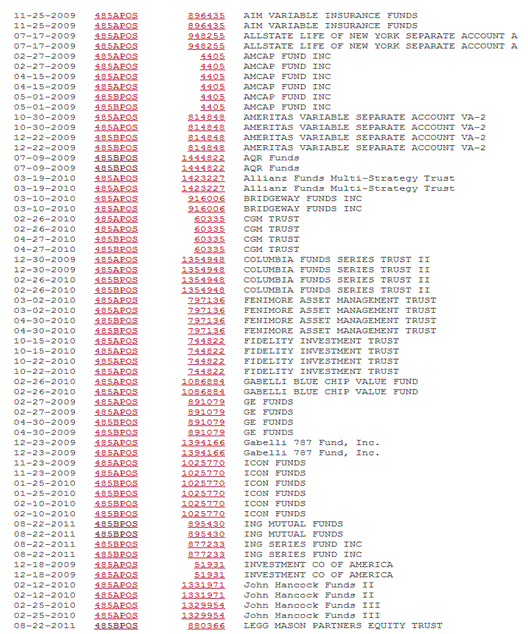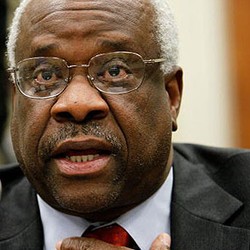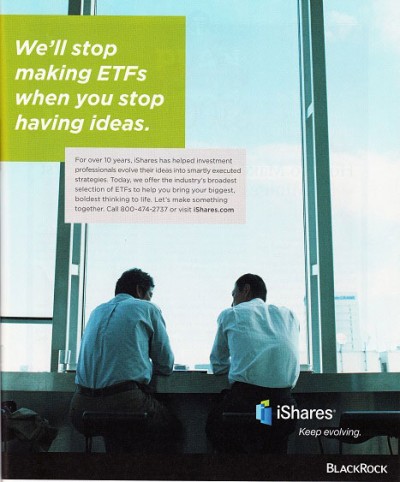Dear friends,
Welcome to David’s Market Timing Newsletter! You’ll remember that, at the beginning of October, I pointed out that (1) you hated stocks and (2) you should be buying them. One month and one large rally – small caps are up 17% for the month through 10/27 while large caps added 12% – later, I celebrate the fact that I’ve now tied Abby Joseph Cohen for great market timing calls (one each). Unlike AJC, I promise never to do it again.
October brought more than a sizzling rally. It brought record breaking heat to the U.K. and record-breaking snowfalls to New York and New England. To my students and colleagues at Augustana College, it brought a blaze of color, cool mornings, warm afternoons, the end of fall trimester and a chance to slow down and savor the dance of the leaves.

Between the oppression of summer and the ferocity of winter, it’s good to have a few days in which to remember to breathe and celebrate life. One of the pleasures of working at a small college is the opportunity to engage in that celebration with really bright, inquisitive kids.
The Observer’s Honor Roll, Unlike Any Other
Last month, in the spirit of FundAlarm’s “three-alarm” fund list, we presented the Observer’s first Roll Call of the Wretched. Those were funds that managed to trail their peers for the past one-, three-, five- and ten-year periods, with special commendation for the funds that added high expenses and high volatility to the mix.
This month, I’d like to share the Observer’s Honor Roll of consistently bearable funds. Most such lists start with a faulty assumption: that high returns are intrinsically good.
Wrong!
While high returns can be a good thing, the practical question is how those returns are obtained. If they’re the product of alternately sizzling and stone cold performances, the high returns are worse than meaningless: they’re a deadly lure to hapless investors and advisors. Investors hate losing money much more than they love making it. One of Morningstar’s most intriguing statistics are its “investor return” numbers, which attempt to see how the average investor in a fund did (rather than how the hypothetical buy-and-hold-for-ten-years investor did). The numbers are daunting: Fidelity Leverage Company (FLVCX) made nearly 13% a year for the past decade while its average investor lost money over that same period.
In light of that, the Observer asked a simple question: which mutual funds are never terrible? In constructing the Honor Roll, we did not look at whether a fund ever made a lot of money. We looked only at whether a fund could consistently avoid being rotten. Our logic is this: investors are willing to forgive the occasional sub-par year, but they’ll flee in terror in the face of a horrible one. That “sell low” – occasionally “sell low and stuff the proceeds in a zero-return money fund for five years” – is our most disastrous response.
We looked for no-load, retail funds which, over the past ten years, have never finished in the bottom third of their peer groups. And while we weren’t screening for strong returns, we ended up with a list of funds that consistently provided them anyway.
U.S. stock funds
| Name | Style | Assets (Millions) |
| Manning & Napier Pro-Blend Maximum Term | Large Blend | 750 |
| Manning & Napier Tax Managed | Large Blend | 50 |
| New Century Capital | Large Blend | 100 |
| New Covenant Growth | Large Blend | 700 |
| Schwab MarketTrack All Equity | Large Blend | 500 |
| T. Rowe Price Capital Opportunities | Large Blend | 300 |
| Tocqueville | Large Blend | 500 |
| Vanguard Morgan Growth | Large Growth | 7,600 |
| Satuit Capital U.S. Emerging Companies | Small Growth | 150 |
International stock funds
| HighMark International Opportunities | Large Blend | 200 |
| New Century International | Large Blend | 50 |
| Laudus International MarketMasters | Large Growth | 1,600 |
| Thomas White International | Large Value | 500 |
| Vanguard International Value I | Large Value | 6,000 |
Blended asset funds
| Fidelity Puritan | Moderate Hybrid | 17,600 |
| FPA Crescent | Moderate Hybrid | 6,500 |
| T. Rowe Price Balanced | Moderate Hybrid | 2,850 |
| T. Rowe Price Personal Strategy Balanced | Moderate Hybrid | 1,500 |
| Vanguard STAR | Moderate Hybrid | 12,950 |
| Fidelity Freedom 2020 | Target Date | 16,100 |
| Permanent Portfolio | Conservative Hybrid | 15,900 |
| T. Rowe Price Personal Strat Income | Conservative Hybrid | 900 |
Specialty funds
| T. Rowe Price Media & Telecomm | Communications | 1,750 |
| T. Rowe Price Global Technology | Technology | 450 |
All of these funds were rated as three stars, or better, by Morningstar (10/31/11). Almost all took on average levels of risk, and almost all were above average performers in bear markets. All of them had positive Sharpe ratios; that is, all of them more than rewarded investors for the risks they bore. While we don’t offer this as a “buy” list, much less a “must have” list, investors looking for solid, long-term performance without huge risks might start their due diligence here.
Trust, But Verify
My first-year students have a child-like faith in The Internet. They’re quite sure that the existence of the ‘net means that they can access all human knowledge and achieve unparalleled wisdom. One percipient freshman wrote that,
 “As technology becomes more sophisticated, developing the capacity to help us make moral and ethical choices as well as more pragmatic decisions, what we call human wisdom will reach new levels” (quoting Marc Prensky, Digital Wisdom, 2009 – I’ll note that the term “claptrap” comes to mind whenever I read the Prensky essay) . . . our mind limits our wisdom, meaning that our daily distractions are holding us back from how intelligent we can really be. Technology however, fills those gaps with its vast memory. Technology is helping us advance our memory, helping us advance our creativity and imagination, and it is fixing our flaws . . . our digital wisdom is doing nothing but getting vaster. Prensky makes a lot of good arguments as to why we are not in fact the stupidest generation to have walked this Earth, and I couldn’t agree more.
“As technology becomes more sophisticated, developing the capacity to help us make moral and ethical choices as well as more pragmatic decisions, what we call human wisdom will reach new levels” (quoting Marc Prensky, Digital Wisdom, 2009 – I’ll note that the term “claptrap” comes to mind whenever I read the Prensky essay) . . . our mind limits our wisdom, meaning that our daily distractions are holding us back from how intelligent we can really be. Technology however, fills those gaps with its vast memory. Technology is helping us advance our memory, helping us advance our creativity and imagination, and it is fixing our flaws . . . our digital wisdom is doing nothing but getting vaster. Prensky makes a lot of good arguments as to why we are not in fact the stupidest generation to have walked this Earth, and I couldn’t agree more.
“Digital wisdom” remains a bit elusive, if only because of flaws in the digits that originally enter the . . . well, digits, into the databases.
There’s no clearer example of egregious error without a single human question than in the portfolio reports for Manning & Napier Dividend Focus (MNDFX). Focus remains almost fully-invested in common stocks, with 2-4% in a money market. I used the Observer’s incredibly helpful Falcon’s Eye fund search to track down all the major reports of MNDFX’s portfolio. I discovered that, as of July 31 2011:
$65 million was held in a money market, and $47 million was in stocks. That would be a 58% cash stake. Source: Manning & Napier month-end holdings, July 31 2011.
That 61% of the fund’s assets were shorting cash and that 94% was long cash, for a net cash stake of 33%. Source: Morningstar.
That 100.28% of the fund’s assets were invested in two Dreyfus Money Market funds. The top ten holdings combined contributed 127% of the fund’s assets. Good news: the money market funds had returned 10.5% each in the first seven months of 2011. Source: Yahoo Finance.
That the fund’s top holding was one Dreyfus money market (94% of assets), the fund’s cash Hybrid must be 33%. Source: USA Today. U.S. News and MSN both agree.
SmartMoney’s undated portfolio report shows 3.9% cash. The Wall Street Journal’s 8/31/11 portfolio lists the Dreyfus fund at 3.02% of the portfolio.
The most striking thing is the invisibility of the error. No editor caught it, no data specialist questioned it, no writer looked further. It seems inevitable that given the sheer volume of information out there, you owe it to yourselves to check – and check again – on the reliability of the information you’ve received before putting your money down.
Two Funds, and why they’re worth your time
Really worth it. Every month the Observer profiles two to four funds that we think you really need to know more about. They fall into two categories:
Most intriguing new funds: good ideas, great managers. These are funds that do not yet have a long track record, but which have other virtues which warrant your attention. They might come from a great boutique or be offered by a top-tier manager who has struck out on his own. The “most intriguing new funds” aren’t all worthy of your “gotta buy” list, but all of them are going to be fundamentally intriguing possibilities that warrant some thought. This month’s new fund:
Manning & Napier Dividend Focus (MNDFX): Manning & Napier is likely the best management team you’ve never heard of. Focusing on dividends is likely the best strategy to follow. And this fund gives you the lowest cost way to combine the two.
Stars in the shadows: Small funds of exceptional merit. There are thousands of tiny funds (2200 funds under $100 million in assets and many only one-tenth that size) that operate under the radar. Some intentionally avoid notice because they’re offered by institutional managers as a favor to their customers (Prospector Capital Appreciation and all the FMC funds are examples). Many simply can’t get their story told: they’re headquartered outside of the financial centers, they’re offered as part of a boutique or as a single stand-alone fund, they don’t have marketing budgets or they’re simply not flashy enough to draw journalists’ attention. There are, by Morningstar’s count, 75 five-star funds with under $100 million in assets; Morningstar’s analysts cover only eight of them.
The stars are all time-tested funds, many of which have everything except shareholders.
Pinnacle Value (PVFIX): John Deysher does micro-caps right. Sensible, skeptical, and cash-heavy, Pinnacle Value offers a remarkably smooth version of the micro-cap ride.
Small Funds Doing Well, and Doing Good

Saturna Capital has been recognized by the Mutual Fund Education Alliance for its philanthropic efforts. On October 27th, they (and American Century Investments) received MFEA’s Community Investment Award for 2011. Saturna, which advises the Sextant and Amana funds, pledged over $2.5 million toward construction of the St. Paul’s Academy Upper School. Saturna’s leadership galvanized other constituencies in the Bellingham, Washington, community to support the project. Their efforts played a key role in securing $6 million in bank financing and over $1 million in private donations.
The past two winners were Aberdeen Asset Management (2010) and Calvert Investments (2009).

Matthews Asia shared the award for best retail communications with Saturna. Both Saturna’s Market Navigator newsletter and Matthews’ collection of Asia-focused newsletters, including the flagship Asia Insight, were recognized for their excellent design and content. This is Saturna’s 15th communication award since 2008.
Northern Funds made a series of often dramatic reductions in the fees it charges to retail investors. They accomplished that by raising the expense waivers on three dozen funds, effective January 1, 2012. The most striking reductions include lopping 45 basis points of the expenses charged by their Emerging Markets Equity Index fund – a drop of more than half, making it less expensive than Vanguard’s offering – and 35 basis points on the Global Sustainability Index. None of the Northern indexes will charge more than 0.30% after the changes. Expenses on Northern’s money market funds will be cut by 10 basis points, from 0.45% to 0.35%.
Morningstar’s Halloween Tricks and Treats
Russel Kinnel, Morningstar’s director of stuff, offered up a set of “portfolio-eating zombie funds” as part of his annual Halloween review (“Yikes … These Funds Have Been Bludgeoned….” 10/31/11). He focused simply on the greatest year-to-date losses, excluding leveraged index funds. The most ghoulish of the creatures:
- YieldQuest Core Equity (YQCEX), down 56%. YieldQuest, with whose adviser I had a cranky exchange when I first profiled these funds, earns a Special Dishonorable Mention for fielding three funds, in three different asset classes, each of which has lost 40% or more this year. The other funds place 4th and 5th on the list of losers: 4. YieldQuest Total Return Bond (YQTRX) and 5. YieldQuest Tax Exempt Bond (YQTEX).
- Birmiwal Oasis (BIRMX), down 55%. Feeling a bit playful, Mr. Kinnel offers “Lesson one: Don’t invest in a fund that sounds like a tiki bar.”
- The USX China (HPCCX), down 54% in 2011 and 14% annually for the past five years.
At #6 on Kinnel’s list is Apex Mid Cap Growth (BMCGX), down 35%, “aided” in part by a 7% expense ratio. Apex also qualified for the Observer’s Rollcall of the Wretched (October 2011) for finishing in the bottom 25% of its peer group for the past 1, 3, 5 and 10 years plus having above average risk and high expenses. Our happiest note about Apex:
The good news: not many people trust Suresh Bhirud with their money. His Apex Mid Cap Growth (BMCGX) had, at last record, $293,225. Two-thirds of that amount is Mr. Bhirud’s personal investment. Mr. Bhirud has managed the fund since its inception in 1992 and, with annualized losses of 8% over the past 15 years, has mostly impoverished himself.
Tenth on the list is Legg Mason Capital Management Opportunity (LMOPX), down 29%. Another Roll Call of the Wretched honoree, I noted of LMOPX, “You know you’ve got problems when trailing 91% of your peers represents one of your better recent performances.” Alarmed at the accusation, the fund promptly settled down and now trails all of its peers (through 10/27/2011).
At the end of September, though, he offered up a basket of autumn treats: his nominees for the best funds launched in the past three years. Kinnel highlighted 19 funds, the five which are “most ready to buy” are:
Dodge & Cox Global Stock (DODWX), “a fine bet right now.” Low expenses, great family.
PIMCO EqS Pathfinder (PTHDX), headed by Mutual Series veterans Anne Gudefin and Chuck Lahr.
DoubleLine Total Return Bond (DBLTX). His court trial is over and he won, but might still need to pay millions. The one thing that the trial does make clear is that the very talented Mr. Gundlach is not a good person. The evidence at trial paints him as an egomaniac (“I am the “A” team”), anxious to be sure no one else detracted from his glory (he had TCW meticulously remove all references to his co-manager from press mentions of his Morningstar Manager of the Year award). Evidence not permitted at trial dealt with sexual liaisons with co-workers, drugs and porn. I’m sure he’s as talented as he thinks he is (as for that matter is Mr. Berkowitz), but it’s hard to imagine a world in which I’d trust him with my money.
American Funds International Growth and Income (IGAAX) is “a similar story to Dodge & Cox Global.”
Hotchkis and Wiley High Yield (HWHAX) offers two former PIMCO managers running a small, good fund.
Among the funds that made both Mr. Kinnel’s list and were profiled at the Observer or at FundAlarm: Akre Focus (AKREX), Tweedy Browne Global Value II Currency Unhedged (TBCUX) and Evermore Global Value (EVGBX).
Launch alert:
Motley Fool Epic Voyage Fund launched on November 1, 2011. It’s an international small-cap value offering, managed by the same folks who run Motley Fool Independence (FOOLX) and Great America (TMFGX) funds. FOOLX is a global equities fund, Great America is smaller-cap domestic. Both are above-average performers and both tend to invest broadly between market caps and styles. $3000 investment minimum and 1.35% expenses, after waivers.
Grandeur Peak Global Opportunities (GPGOX) and Grandeur Peak International Opportunities (GPIOX) both launched October 17, 2011. The funds are currently available directly from Grandeur Peak (http://www.grandeurpeakglobal.com or 1.855.377.PEAK), or through Schwab or Scottrade. President Eric Huefner reports that, “We expect to be available at Fidelity, Pershing, E*Trade, and various other platforms within the next few weeks.” They’re also working with TD Ameritrade, but apparently that’s going really slow.

Former Wasatch managers Robert Gardiner and Blake Walker are attempting to build on their past success at Wasatch Global Opportunities (WAGOX) and Wasatch International Opportunities (WAIOX). My August story, Grandeur Peaks and the road less traveled, details the magnitude (hint: considerable) of those successes.
Both funds launched with $2.00 per share prices, while the industry standard is $10.00. Folks on the Observer’s discussion board noted the anomaly and speculated that it might be a strategy for masking volatility. At $2.00, another change under 0.5% gets reported as “zero.” Mr. Huefner offered a more benign explanation: “that’s what we always did at Wasatch and since we’re all from Wasatch, we decided to do it again.”
Wasatch’s rationale was symbolic: since their original offerings were all micro- to small-cap funds which would need to close with still-small asset bases, they thought the $2.00 NAV nicely reinforced the message “we’re different, we’re the small fund guys.”
Briefly Noted . . .
RiverPark Short-Term High-Yield (RPHYX) was the subject of a very positive Forbes article, entitled “For fixed-income investors, another way to beat Treasurys” (October 21 2011). Forbes was struck by the same risk minimization that we were: “the principal, and interest payments, are virtually guaranteed. It might not always work. But investors who can sleep at night knowing they’re holding junk bonds might be better off than investors who are barely beating inflation in the Treasury and money markets.” The fund’s assets under management are around $25 million, up from $20 million in summer. Almost three-quarters of that money comes from institutional investors.
T. Rowe Price Emerging Europe and Mediterranean is trying to become T. Rowe Price Emerging Europe. Two factors are driving the change. First, Israel was been reclassified as a “developed” market which meant that the fund eliminated its investments there. Second, it had only limited exposure to Turkey and Egypt, which made the “and Mediterranean” designation somewhat misleading. If shareholders (the sheep) approve, the change will become effective in March, 2012. The fund’s manager and wretched recent record (up 15.5% annually over the past 10 years, but down 4% annually over the past five) both remain.
Meet “the New Charlie.” Having dispatched “my Charlie” Fernandez, Bruce Berkowitz found a Fred, instead. Fred Fraenkel joins the firm as Chief Research Officer for whom Job Number One is . . . research? Not so much. “As our Chief Research Officer, Fred’s first task is to find ways to better communicate with clients as to which Fairholme’s best is yet to come,” says Berkowitz.
Effective on October 18, nine Old Mutual funds disappeared into a bunch of Touchstone funds. These include Old Mutual Analytic U.S. Long/Short Fund which melted into Touchstone U.S. Long/Short and Old Mutual Barrow Hanley Value disappeared into Touchstone Value.
Eaton Vance Global Macro Absolute Return (EAGMX) reopened to new investors on Oct. 19, 2011. The Morningstar analyst, perhaps bewilderingly, says: “Eaton Vance Global Macro Absolute Return is like the duck on smooth water whose hidden legs are pedaling furiously under the surface.” The data says: steadily deteriorating performance and in the basement, overall.
Eaton Vance Equity Asset Hybrid (EEAAX) will liquidate at the end of December, 2011.
Harbor Funds’ Board of Trustees announced on Halloween Day that Harbor Small Company Value Fund (HISMX) will be liquidated (and dissolved! What a Halloween-ish image) by year’s end. HISMX was a perfectly solid little fund (top 10% of its peer group over the past three years) that never managed to become economically sustainable. Harbor’s ongoing need to underwrite the expenses of a $10 million fund made its death inevitable. The Board’s assertion that this was in the best interests of the fund’s shareholders, who were holding a good investment for which Harbor offers no obvious alternative, is polite drivel. (Thanks to TheShadow for quickly noticing, and posting, the announcement.)
In closing . . .
A million thanks to the folks who have been supporting the Observer, whether through direct contributions or by using our Amazon link. Special thanks for the ongoing support of our Informal Economist and John S, and to the new contributors this month. I’ve been a putz about getting out thank-you notes, but they’re coming!
As you begin planning holiday shopping, please do use – and share – the link. It costs nothing and takes no effort, but does make a real difference.
We’re hoping that by December you’ll actually see that difference. The Observer actually has a secret identity. Buried beneath our quiet exterior is a really attractive, highly-functional WordPress site waiting to get out. We haven’t had the resources before to exploit those capabilities. But now, with the combined efforts of Anya Z., a friend of the Observer who has redesigned the site, and Chip and her dedicated staff, we’re close to rolling out a new look. Clean, functional, and easier to use: all made possible by your moral, intellectual and financial support.
And so, as we approach the season of Thanksgiving, here’s a sincere thanks and “see ya!” to one and all.
David














